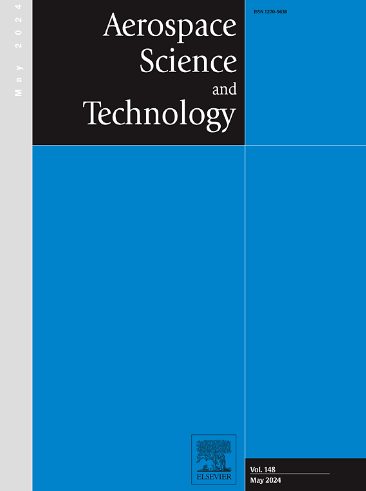利用神经网络优化基于翼手目种子的生物仿真飞行器的气动外形
IF 5
1区 工程技术
Q1 ENGINEERING, AEROSPACE
引用次数: 0
摘要
风媒翼手目种子依靠双翼在风中保持稳定的自动旋转和较长的续航能力。它们优越的飞行模式可应用于仿生飞行器。对于生物仿真飞行器来说,漂浮能力是最重要的性能之一,而漂浮能力主要受空气动力学形状的影响。基于天然翼手目种子的形状,对生物仿真飞行器进行了气动优化。为了提高优化效率,在优化框架中使用了机器学习方法。首先,建立了基于径向基函数神经网络和数值模拟数据集的生物仿真飞机气动代用模型,其升力和气动效率系数的准确率分别为 98.4% 和 94.7%。基于多岛遗传算法进行了气动优化,得到了仿生物飞机的优化外形。与原始形状相比,优化形状的气动效率因子提高了 50%以上。机翼迎风面和背风面之间更大的压力差和更大的前缘顶点使优化后的形状具有更高的升力。本文章由计算机程序翻译,如有差异,请以英文原文为准。
Aerodynamic shape optimization of a Pterocarya stenoptera seed based biomimetic aircraft using neural network
The wind-borne Pterocarya stenoptera seeds depend on their double wings to keep stable autorotation and long endurance in the wind. Their superior flight modes can be applied to biomimetic aircraft. For biomimetic aircraft, floating ability is one of the most important performances, which is mainly affected by the aerodynamic shape. Based on the shape of a natural Pterocarya stenoptera seed, aerodynamic optimization is carried out for biomimetic aircraft. To increase the optimization efficiency, machine learning method is used in the optimization framework. Firstly, an aerodynamic surrogate model based on the radial basis function neural network and numerical simulated dataset is developed for the biomimetic aircraft, which has an accuracy of 98.4% and 94.7% for lift and aerodynamic efficiency factor, respectively. Aerodynamic optimization based on the multi-island genetic algorithm is carried out, and an optimized shape is obtained for the biomimetic aircraft. Compared with the original shape, the aerodynamic efficiency factor of the optimized one has been increased by over 50%. The larger pressure difference between the windward side and leeward side of the wings and the larger leading-edge vertex contribute to a higher lift for optimized shape.
求助全文
通过发布文献求助,成功后即可免费获取论文全文。
去求助
来源期刊

Aerospace Science and Technology
工程技术-工程:宇航
CiteScore
10.30
自引率
28.60%
发文量
654
审稿时长
54 days
期刊介绍:
Aerospace Science and Technology publishes articles of outstanding scientific quality. Each article is reviewed by two referees. The journal welcomes papers from a wide range of countries. This journal publishes original papers, review articles and short communications related to all fields of aerospace research, fundamental and applied, potential applications of which are clearly related to:
• The design and the manufacture of aircraft, helicopters, missiles, launchers and satellites
• The control of their environment
• The study of various systems they are involved in, as supports or as targets.
Authors are invited to submit papers on new advances in the following topics to aerospace applications:
• Fluid dynamics
• Energetics and propulsion
• Materials and structures
• Flight mechanics
• Navigation, guidance and control
• Acoustics
• Optics
• Electromagnetism and radar
• Signal and image processing
• Information processing
• Data fusion
• Decision aid
• Human behaviour
• Robotics and intelligent systems
• Complex system engineering.
Etc.
 求助内容:
求助内容: 应助结果提醒方式:
应助结果提醒方式:


